Japanese Goblins, Ghosts, Shapeshifters and Devils of the Buddhist Hell are a motley crew ranging from downright funny to ghoulishly scary.
The Kings of Japanese Ghost Stories (Kaidan) are Koizumi Yakumo f/k/a Lafcadio Hearn who wrote Kwaidan: Stories and Studies of Strange Things in the early 1900s and Shigeru Mizuki who, in the 1960s, wrote the popular Gegege no Kitaro series – all about Youkai.
Interestingly, whereas, in many Western cultures, ghost stories are most often recited in Autumn around the time of All Hallows Eve or Halloween, in Japan ghost stories have been traditionally used as a way to cool down from the intollerable heat of summer. These days many of us have the benefit of air con, but historically, Japanese figured out that the cold chill of fear experienced from a well-told ghost story was a refreshing blast amid the summer heat. For this reason, Japan enjoys its Ghosts, Ghouls, Goblins, Shapeshifters and other Scaries during the summer months.
Myth holds that the land of the Youkai is called Gensokyo and it can only be accessed by travelling through the gateway at Hakurei Shrine.

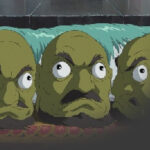
Youkai have become more popular of late as they have been featured in several Manga series as well as in some of the popular Hayao Miyazake animated movies like Sen to Chihiro no Kamikakushi (English Title – Spirited Away) and Tonari no Totoro (English Title – My Neighbor Totoro). Sen to Chihiro featured at least two Youkai that I can think of, the Nukekubi and the Nopperabo. And, Totoro featured at least one Youkai, the Nekomata or Bake neko.
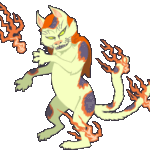

Although most often lumped together into one big group, I favor Robert Jay Gould’s 4 categories based on origin. Below are brief explanations and examples of certain Youkai, Yuurei and Bakemono but the category of Oni is so broad that it is best delved into at a different time when it can be given the attention it properly deserves.
Youkai – goblinlike monsters were born as monsters and have always been this way.
ExamplesTanuki (raccoon dog)
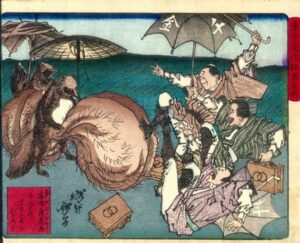
Tanuki have really large testicles and in Japanese myth, the tanuki use their over-sized testicles for many purposes. They are so large they can sleep on them, fill them with air and use them as drums or even as a parachute. In wilder stories, they are known to extend their testicles to the size of eight tatami rooms. They then usually invite human beings into the testicle rooms and discuss or bargain with them. If you are invited in a tanuki’s ballroom (pun intended), remember to put out your cigarettes; you’ll be in for a dangerous adventure if your burning ashes touch the testicle floor…
Yamabiko (valley echo) – you can summon a Yamabiko by lighting 100 candles and then putting them out 1 by 1. After the final candle has been put out the Yamabiko will appear in front of you in the darkness.
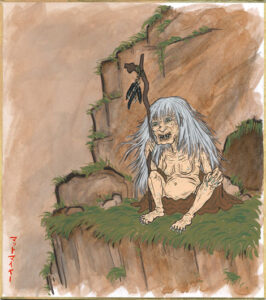
Yama Uba (mountain witch)
She preys on travelers lost in the woods, sometimes disguising herself as a beautiful young maiden, other times sneaking up on them and ensnaring them in her hair, other time offering to help them and instead capturing them, fattening them up to eat later.
Yuurei – are closest to the ghosts and spirits of the Western world, and Onryo (vengeance seeking ghosts) are a special sub-category of Yuurei. If a person is killed while feeling strong hatred or need for revenge against their killer the ghost (Onryo) of that person will be able to return and take vengeance on the killer.
Examples
Ikiryou (doppleganger or ghost body double)
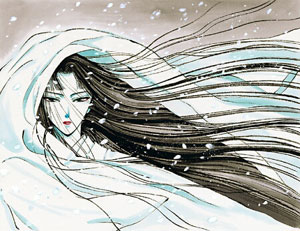
Yuki Onna (snow woman)
The snow woman of Niigata Prefecture causes people to freeze to death and tears the livers out of living children, in Iwate and Miyagi she can pull out your soul, and in Ibaraki she calls out to passers-by and pushes them into ravines if she is ignored. In Aomori she takes on the character of the mother ghost called ubume, harassing people into holding her child, which then becomes so large it crushes them and she devours the body.
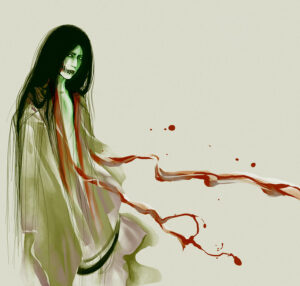
Kuchisake Onna (vampire mouth woman)
There is a kinda scary story about the Kuchisake Onna, you can check it out here.
Bakemono – are supernatural shapeshifters that originated from something else; generally negative feelings will create an Obake.
Examples
Nekomata (shapeshifting shamin cat) cats that live past 10 years of age and turn into Nekomata and their tails split in 2; said to have shaman-like abilities and hate humans at some times (pictured above).
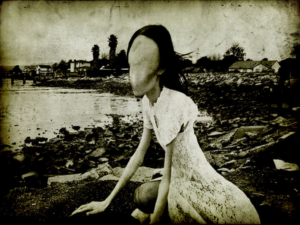
Nopperabo (the faceless)
They appear at first as a human being, sometimes even impersonating someone familiar to the victim, before causing their face to melt and disappear leaving a smooth sheet of skin where the facial features formerly were.
Nukekubi (headless body)
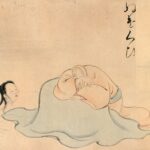
Appears as a normal human being but at nighttime the head can fully detach from the body and bounce or fly around searching for people to devour. Myth has it that if you encounter a headless body you should hide it away so that the returning head can’t find its body and then both parts will die. In his book Kwaidan – Japanese Ghost Stories, Koizumi Yakumo mistakenly referred to the Nukekubi as Rokurokubi, which can elongate or stretch their necks while the head goes in search of food.
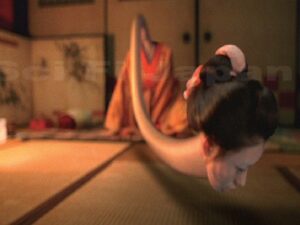
As far as my favorite, well after a lot of consideration I narrowed it down to two. One “funny” favorite, the Tanuki or big-balled raccoon dog, and one “scary” favorite, the Nukekubi or headless body.
“This article is a submission for the Japan Blog Matsuri hosted by Mazikeen”
Sources
- Addis, Stephen, ed. Japanese Ghosts and Demons: Art of the Supernatural. George Braziller, 2001.
- Kiej’e, Nikolas. Japanese Grotesqueries. C. E. Tuttle Co., 1973.
- abbr. KYDD: Kaii-Yōkai Denshō Database. Online bibliographical database of supernatural folklore published by the International Research Center for Japanese Studies.
- Mizuki, Shigeru. Mizuki Shigeru No Nihon Yōkai Meguri. JTB, 2001.
- Mizuki, Shigeru. Aizōban Yōkai Gadan. Iwanami Shoten, 2002.
- Mizuki, Shigeru. Mujara 1: Kantō, Hokkaidō, Okinawa-hen. Soft Garage, 2003.
- Mizuki, Shigeru. Mujara 2: Chūbu-hen. Soft Garage, 2003.
- Mizuki, Shigeru. Mujara 3: Kinki-hen. Soft Garage, 2003.
- Mizuki, Shigeru. Mujara 4: Chūgoku, Shikoku-hen. Soft Garage, 2004.
- Mizuki, Shigeru. Mujara 5: Tōhoku, Kyūshū-hen. Soft Garage, 2004.
- Mizuki, Shigeru. Mujara 6: Sekai, Tokubetsu-hen. Soft Garage, 2004.
- Takehara, Shunsen. Tōsanjin Yawa – Ehon Hyaku Monogatari. Kadokawa Shoten, 2006. ISBN 4043830017.
- Toriyama, Sekien. Gazu Hyakki Yakō Zenga Shū. Kadokawa Shoten, 2005. ISBN 4044051011.
- Yanagita, Kunio. Yōkai Dangi. Kōdansha, 1977. ISBN 406158135X.
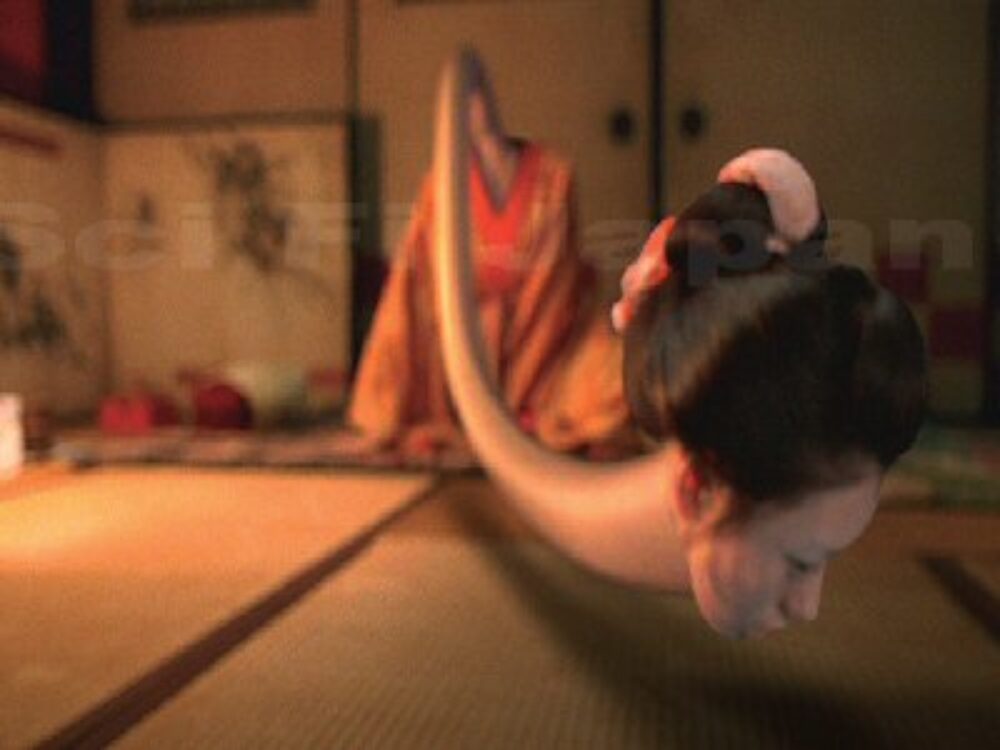
i just discovered your blog and really like it!!!
OOoh hooo, Love this post. The Tanuki had me baffled for so long, thanks for sharing.
Excellent job Crazy sir! You rock! Learned so much reading this. I’d seen Spirited Away and loved it. Now I understand a bit more than I did then. Thanks for the lesson! (-:
loco
I really enjoyed the article 😀 My favorite monster though has to be Megitsune though–foxes who take the form of a woman to seduce men.
Well done dude:)) It’s such a fun topic. My favorite one is ‘Tanuki’too. They are so funny!! I can’t imagine how big thier balls are….haha
Wow, what a wonderful entry! The images are fantastic and some are very creepy. I really like the tanuki too, they have a tanuki matsuri here in Tokushima. 🙂
Thanks Maz! You picked a great topic for the Matsuri and it was a lot of fun learning all about Japanese Youkai.